College Soccer Recruiting Mistakes to Avoid (From a Coach’s Perspective)
Intro
The path to college soccer isn’t only about doing the right things—it’s also about avoiding costly mistakes. As a coach who’s seen players succeed and others derail their recruiting journey, I know that small missteps can have big consequences. Whether you’re just starting your recruiting timeline or already contacting coaches, understanding common college soccer recruiting mistakes will help you stay on course. This article identifies frequent pitfalls and offers practical tips to avoid them. By learning from others’ experiences, you can present yourself as a mature, coachable, and organized prospect—traits that set you apart in a competitive field.
Starting the Process Too Late
One of the most common soccer recruiting mistakes is waiting until senior year to begin contacting coaches. By then, many rosters and scholarship budgets are already set. Although late recruiting is possible, you’ll have fewer options. Instead:
- Begin Early: Freshman and sophomore years are ideal times to start researching programs, building your resume, and honing your highlight video.
- Attend Camps and Showcases: Juniors should attend ID camps and big showcases to get maximum exposure.
- Stay on Schedule: Use a recruiting timeline like our College Soccer Recruiting Timeline: Month-by-Month Checklist to track tasks and deadlines.
Remember, coaches identify players at least a year (often two) before they sign.
Neglecting Academics
Many athletes assume their talent alone will get them into college soccer. However, poor grades can disqualify you even if you’re talented:
- Maintain Academic Eligibility: NCAA minimum GPA and core course requirements must be met. Each division and school may have higher standards.
- Prepare for Tests: Study for the SAT/ACT to open more scholarship opportunities.
- Show Responsibility: Coaches want players they can trust to stay eligible. Strong academics demonstrate reliability and discipline.
Academic missteps can prevent your name from even making it to the coach’s desk.
Poor Communication with Coaches
Recruiting is built on relationships. These mistakes can damage your chances:
- Generic Emails: Coaches can spot copy‑and‑paste emails. Personalize each message with details about the program and why you’re a good fit.
- No Follow-Up: If a coach emails you, respond promptly—even if it’s just to say thank you. Lack of follow-up shows disinterest.
- Inappropriate Content: Avoid emailing from unprofessional email addresses or using slang. Proofread your messages and keep the tone respectful.
- Not Knowing the Coach: Sending an email addressed to the wrong coach or to a coach who left the program shows a lack of research.
Treat every interaction as a professional opportunity.
Not Doing Research on Programs
Ignoring research leads to applying for schools that are poor fits:
- Level of Play: Be realistic about your ability. Target programs where you can compete for playing time.
- Program Needs: Coaches recruit based on their positional needs. If they graduated four seniors on defense, they’re likely looking for defenders.
- School Culture and Academics: Consider the campus location, class size, major offerings, and team culture. Don’t just choose a big-name program without understanding the environment.
Researching reduces the risk of transferring later due to dissatisfaction.
Poor Social Media Presence
Your online presence matters. Coaches often check recruits’ social profiles:
- Inappropriate Posts: Anything offensive, discriminatory, or illegal can end your recruiting journey. Keep your content professional and positive.
- Unrealistic Athletic Claims: Exaggerating your accomplishments is easily uncovered. Honesty builds trust with coaches.
- Sharing Highlights: While posting highlight clips is fine, avoid tagging coaches or programs repeatedly—especially if you’ve never contacted them. It can come off as spammy.
Before you post, consider how a coach might view it.
Overlooking Fit and Balance
Not every player thrives in every program. Common fit-related mistakes include:
- Overemphasizing Division Level: Division I is not automatically better; Division II, Division III, and NAIA offer high levels of competition, scholarships, and strong academics.
- Ignoring Team Culture: You might join a roster of 30 players where only 18 travel. If you value playing time, choose a smaller roster with more opportunities.
- Neglecting Personal Goals: Consider how soccer fits with your career goals. A smaller program may offer a major that better aligns with your future.
Focusing solely on soccer can lead to burnout or dissatisfaction.
Conclusion
Avoiding common college soccer recruiting mistakes is as important as doing the right things. Start your recruiting journey early, maintain strong academics, communicate professionally, research schools thoroughly, monitor your social media, and prioritize personal fit. By sidestepping these pitfalls, you set yourself up for a positive recruiting experience and a successful college soccer career. For more detailed guidance on timing and actions, refer to our comprehensive College Soccer Recruiting Timeline: Month-by-Month Checklist.
Want help reviewing your recruiting strategy? I offer consultations to identify potential missteps and craft a plan that highlights your strengths. Book a college soccer recruiting consultation and ensure your path to college soccer is smooth and successful.
